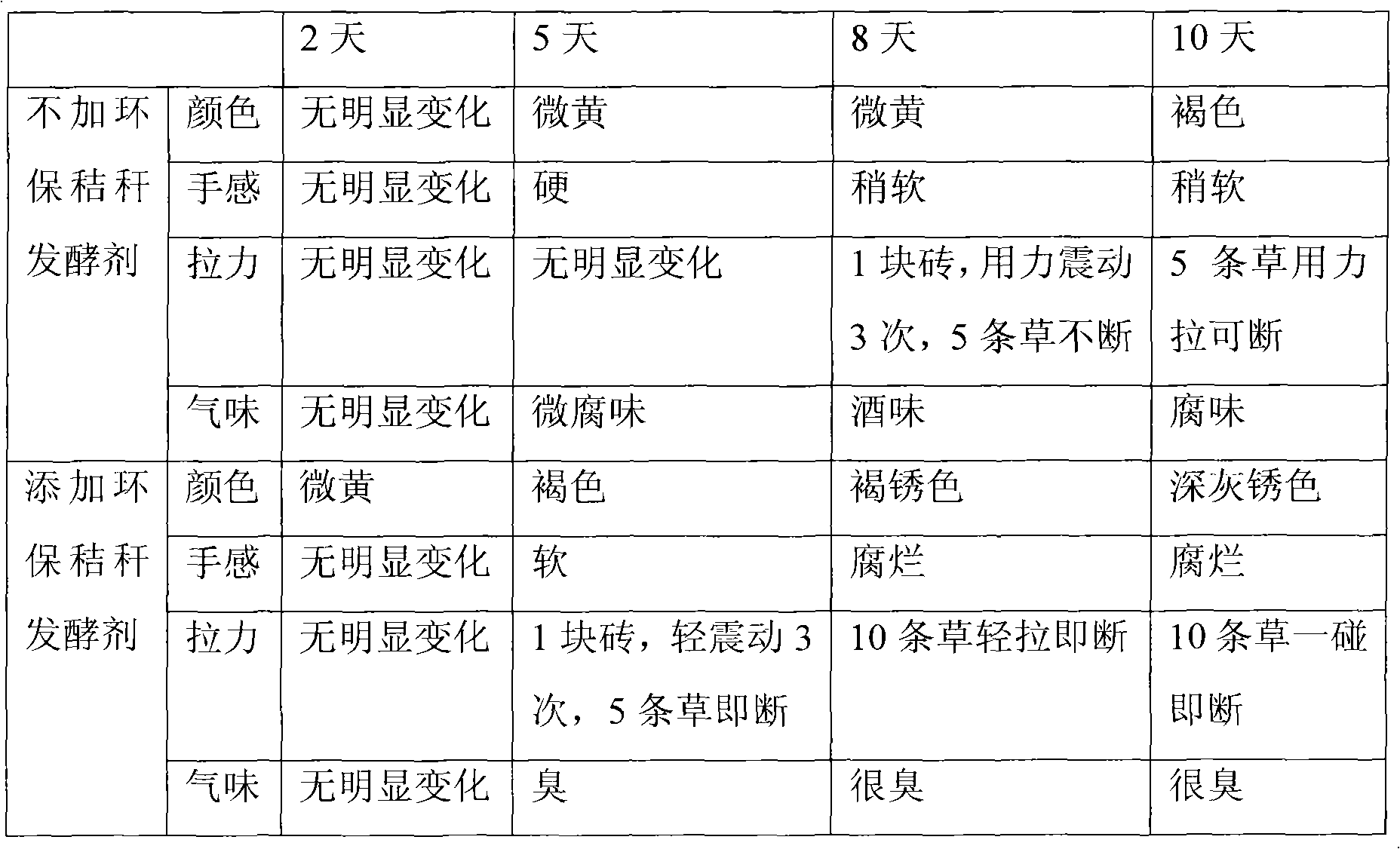Environment-friendly straw fermenting agent
A technology of straw fermentation agent and Saccharomyces cerevisiae, applied in the field of microorganisms, can solve the problems of low total degradation rate of cellulose, long fermentation cycle, weak decomposition ability, etc., and achieve the effect of strong ability to adapt to the external environment, easy operation, and strong enzyme activity
- Summary
- Abstract
- Description
- Claims
- Application Information
AI Technical Summary
Problems solved by technology
Method used
Image
Examples
Embodiment 1
[0045] An environmentally friendly straw starter, the active ingredients of the inoculant are raw materials in the following weight percentages:
[0046] Bacillus subtilis 25%, Trichoderma viride 15%, Saccharomyces cerevisiae 18%,
[0047] Aspergillus niger 12%, Streptomyces hygroscopicus 10%, Trichoderma corningensis 10%, Arthrobacter 10%.
[0048] The selection of Bacillus subtilis, Trichoderma viride, Saccharomyces cerevisiae, Aspergillus niger, Streptomyces hygroscopicus, Trichoderma corningii, Arthrobacter is widely available, and can be purchased from commercial sources, such as China Agricultural Microbial Culture Collection Management Center , The General Microbiology Center of the Chinese Microbial Culture Collection Management Committee, or the American Culture Collection (ATCC) and other commercial channels.
[0049] The preparation steps of each strain are:
[0050] Separate expansion culture of various strains:
[0051] A. Cultivation of Bacillus subtilis and Arthrobacter: ...
Embodiment 2
[0059] An environmentally friendly straw starter, the active ingredients of the inoculant are raw materials in the following weight percentages:
[0060] Bacillus subtilis 25%, Trichoderma viride 15%,
[0061] Saccharomyces cerevisiae 18%, Aspergillus niger 12%,
[0062] Streptomyces hygroscopicus 10%, Trichoderma corningensis 10%,
[0063] Arthrobacter 10%.
[0064] In the above bacterial agents, the Bacillus subtilis is specifically Bacillus subtilis (Bacillus subtilis) ACCC 01178;
[0065] The Trichoderma viride is specifically Trichoderma viride ACCC 30206;
[0066] The Saccharomyces cerevisiae is specifically Saccharomyces cerevisiae ACCC 20037;
[0067] The Aspergillus niger is specifically Aspergillus niger ACCC30117;
[0068] The Streptomyces hygroscopicus is specifically Streptomyces hygroscopicus ACCC41508;
[0069] The Trichoderma konigii is specifically Trichoderma konigii ACCC 30388;
[0070] The Arthrobacter is specifically Arthrobacter SP. ACCC 10658;
[0071] The preparation st...
Embodiment 3
[0080] The environmentally friendly straw starter prepared in Example 2 was selected as the experimental site in Nanzhangyu Village, Cangshan County, Shandong Province. The main crop rotation mode was early rice-late rice-cole. After the early rice was harvested, all straws were returned to the field, and no-tillage seedling throwing was implemented. The test crop is hybrid rice.
[0081] test results
[0082] After the rice was harvested, the straws were spread in the experimental field, and the experimental field with the environmentally friendly straw starter of the present invention applied 2kg of the inoculum prepared in Example 2 per acre, and the control group did not use the environmentally friendly straw starter, and then irrigated to observe the changes of straw maturity :
[0083] Table 1 Straw maturity of different treatments
[0084]
[0085] Rice yield experiment: The experiment has 9 plots, each plot is (6×8)m 2 ;, Random block arrangement. 0.15 kg of environmentally ...
PUM
 Login to View More
Login to View More Abstract
Description
Claims
Application Information
 Login to View More
Login to View More - R&D
- Intellectual Property
- Life Sciences
- Materials
- Tech Scout
- Unparalleled Data Quality
- Higher Quality Content
- 60% Fewer Hallucinations
Browse by: Latest US Patents, China's latest patents, Technical Efficacy Thesaurus, Application Domain, Technology Topic, Popular Technical Reports.
© 2025 PatSnap. All rights reserved.Legal|Privacy policy|Modern Slavery Act Transparency Statement|Sitemap|About US| Contact US: help@patsnap.com

